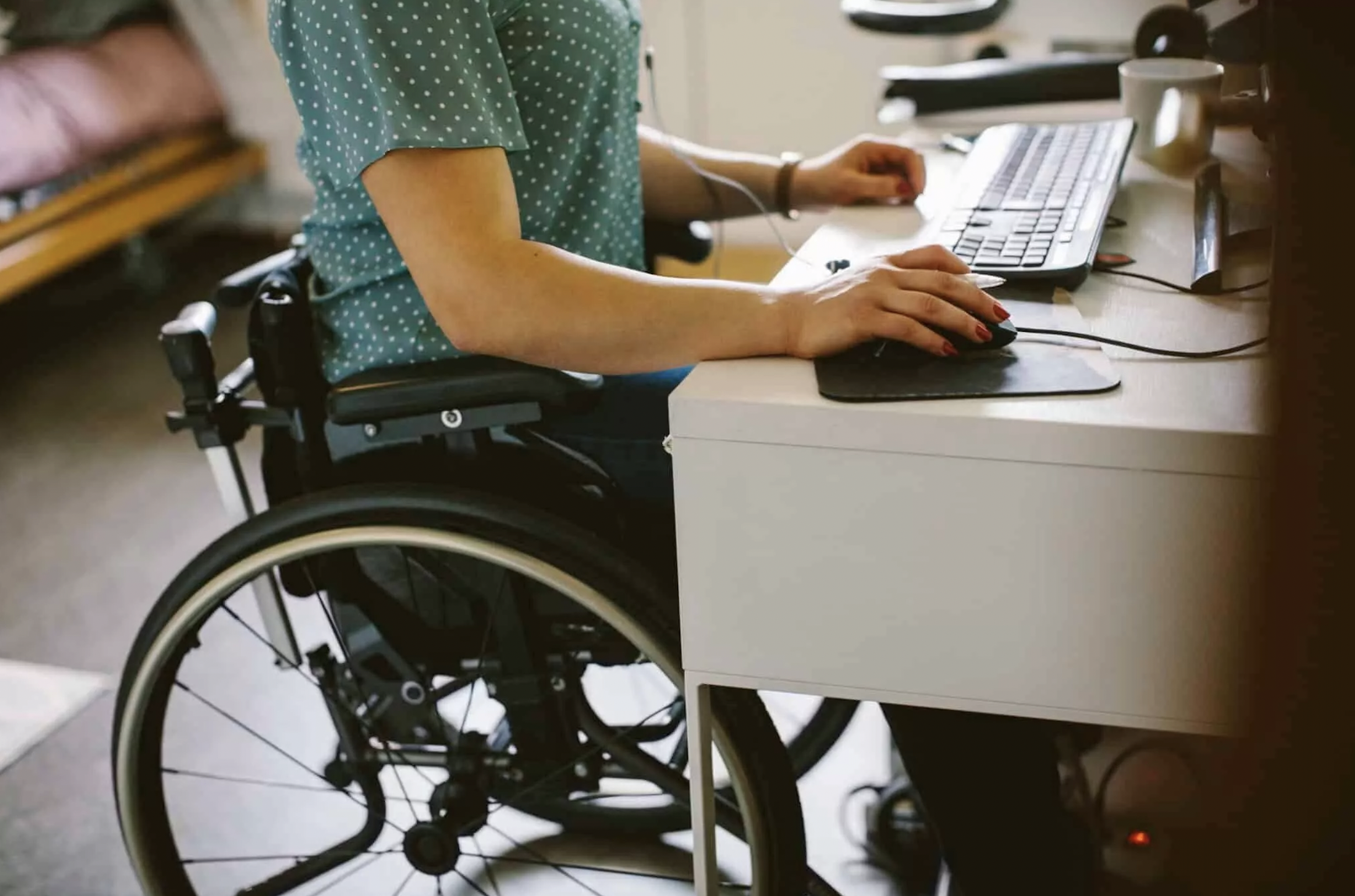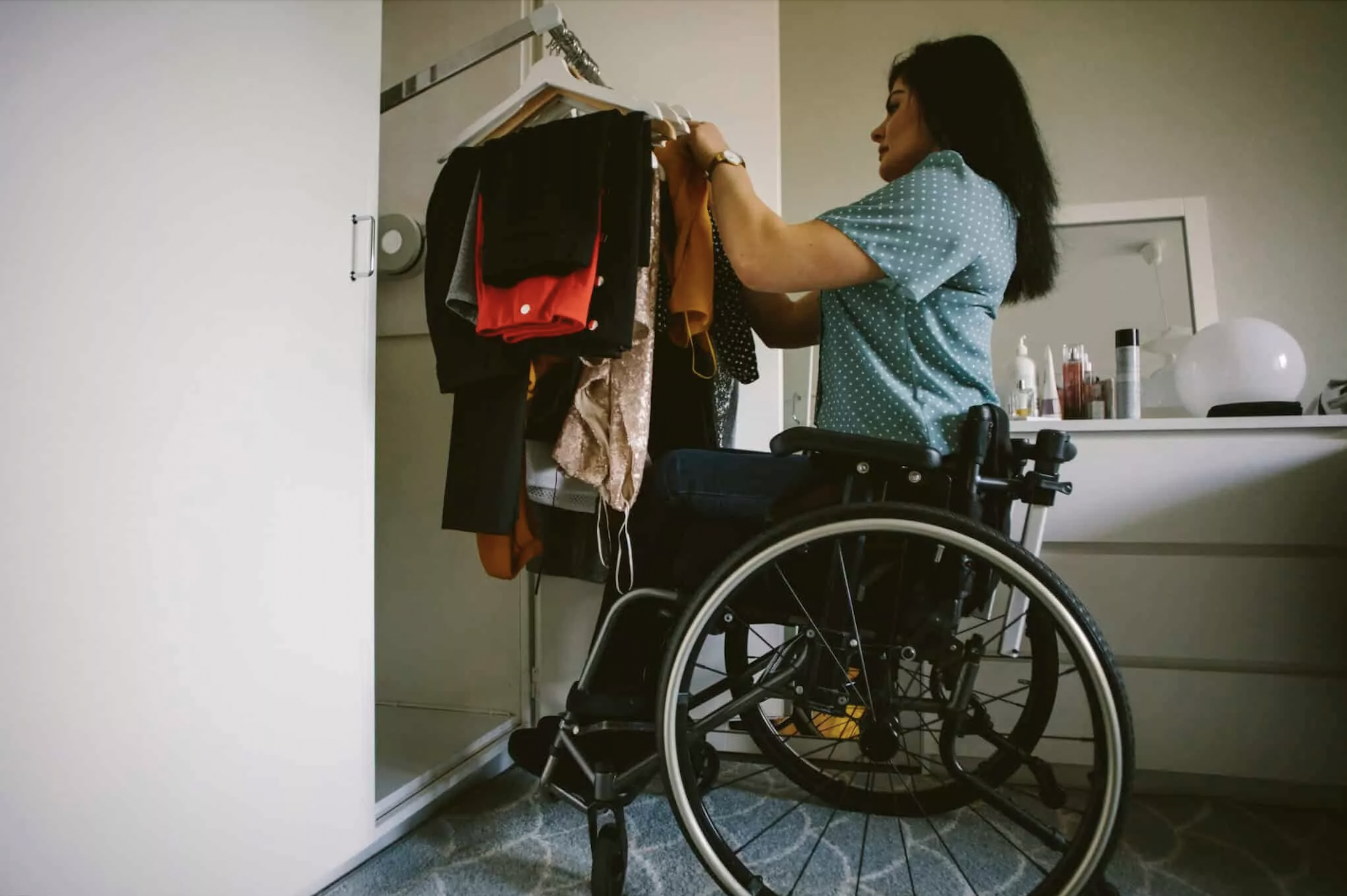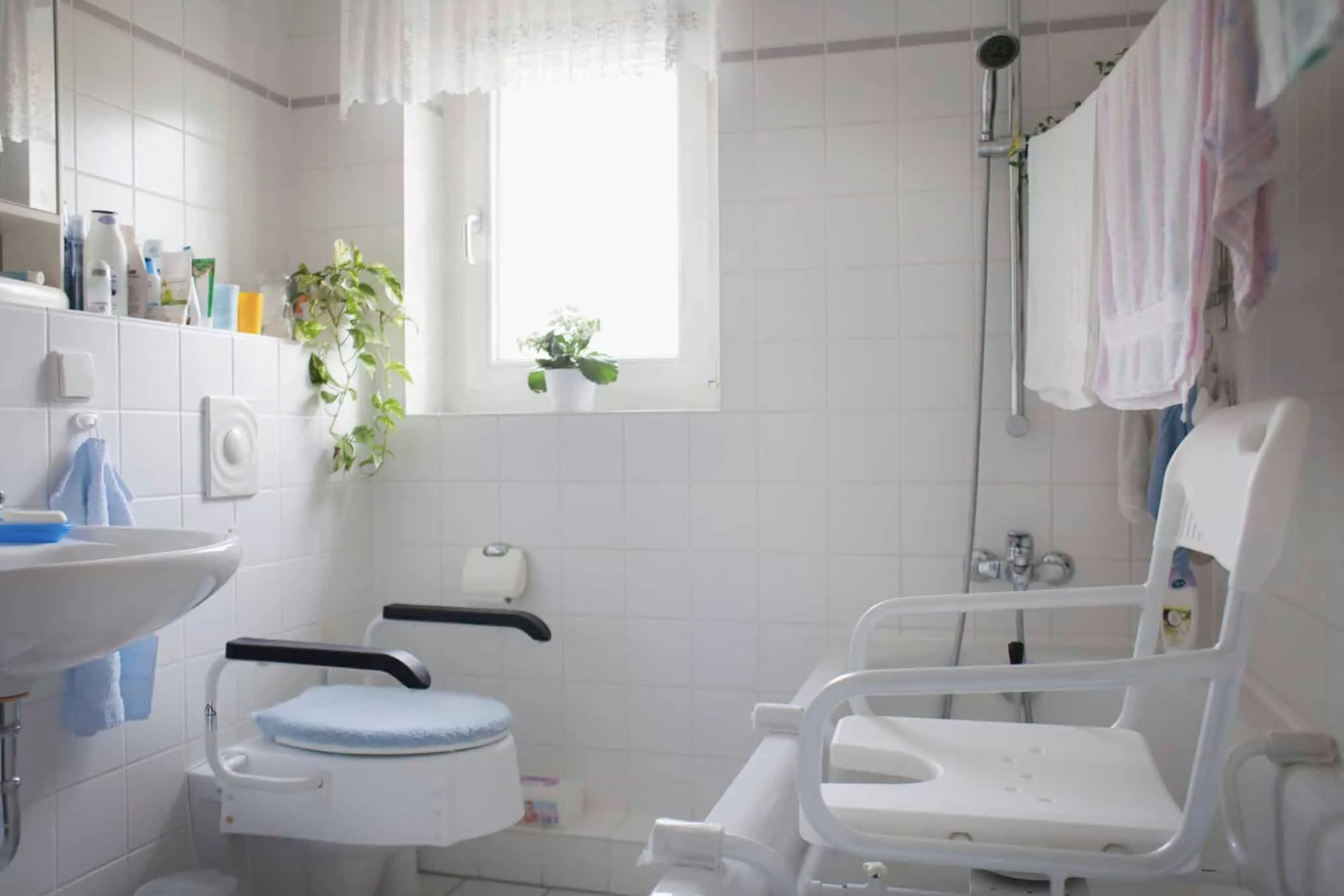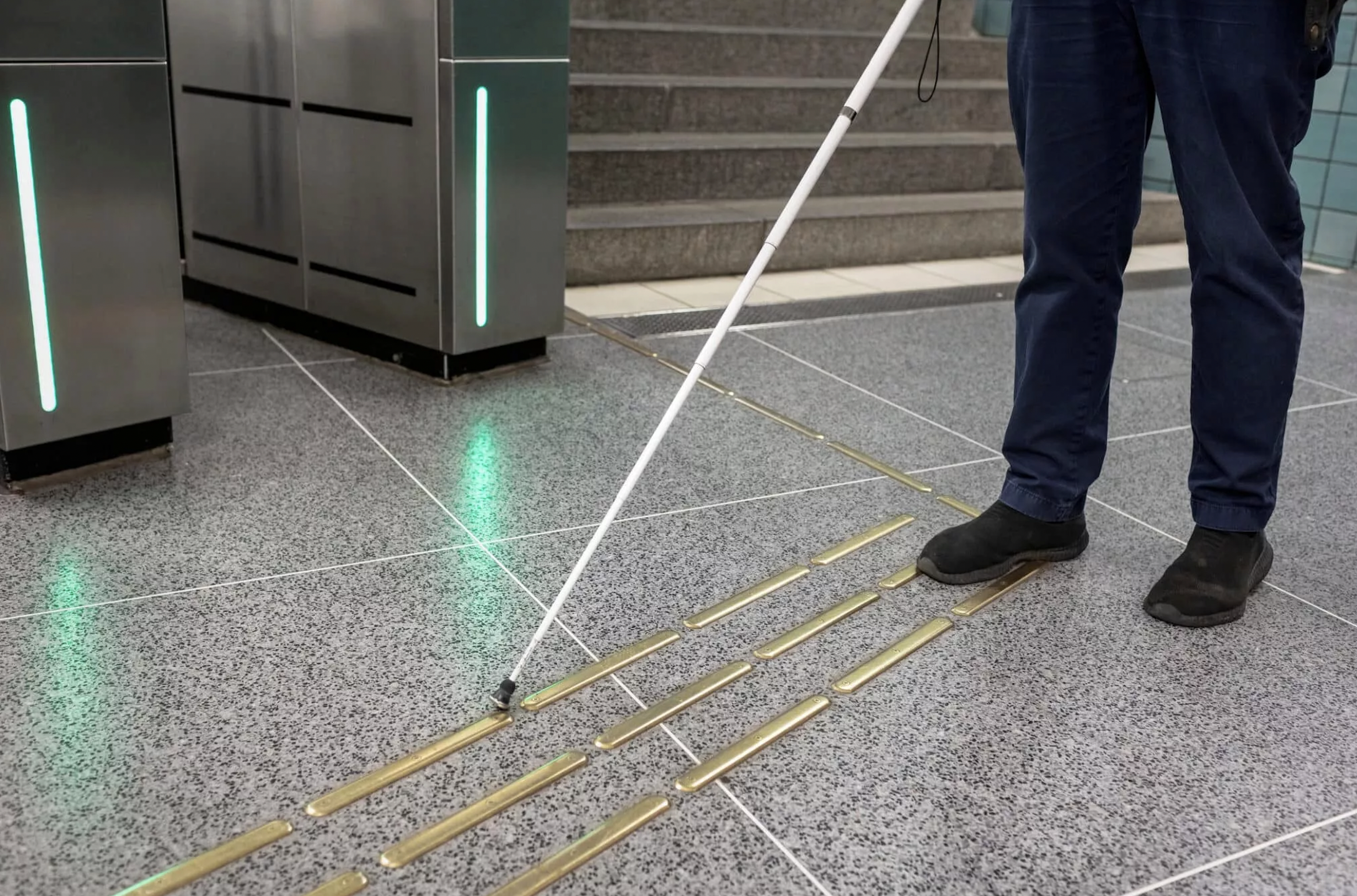The following blog is being used with permission from EcoWatch and can be found on their website by clicking here.
By: Kristina Zagame

Credit: Maskot via Getty Images
Concert venues, shopping plazas and sporting arenas are continuously constructing accessibility improvements to make public spaces more comfortable for people with disabilities. But unfortunately, there’s one place that continues to be a challenge for people with disabilities to navigate — their own homes.
An accessible home is a home designed or modified to enable independent living for people with disabilities or health issues. Nearly 40.7 million people in the United States live with a disability, and yet a study from the U.S. Department of Housing and Development (HUD) reveals that an overwhelming majority of single-family homes are not accessible.1,2
The truth is, everyone benefits from home modifications. If you or someone you know requires home modifications, there are ways to improve the accessibility and efficiency of your home while also improving its resilience and sustainability. After all, a green home is a healthy home, and everyone should have access to a healthy home.
Designing Green Homes With Accessibility In Mind
A study from HUD revealed that only one-third of U.S. homes have some essential accessibility features, but would not be completely accessible without further modifications. Less than 5% of homes have accessibility features needed to accommodate a person with moderate mobility difficulties.3
accessible without further modifications. Less than 5% of homes have accessibility features needed to accommodate a person with moderate mobility difficulties.3
While improved accessibility is important from an equality standpoint, it can also improve many aspects of your home. Combine sustainability with accessibility and watch your home value soar.
A study from the University of Ohio found that buyers would be willing to pay nearly $15,000 more for a home with accessibility features.4 And real estate agents report that energy efficiency adds $8,246 to a home’s value in 2022.5
Credit: Maskot via Getty Images
How to Improve Sustainability and Accessibility In Your Home
The following features can make your home more comfortable for people with disabilities while also being more energy-efficient and sustainable. Keep in mind that additional features may be necessary depending on the needs of the members of your household.
- Zero-step entrances
- No stairs
- Wheelchair-accessible doorways and bathrooms
- Wider hallways and doorframes
- Energy-efficient windows and doors that can be easily opened and closed
- Solar panels and solar-powered appliances
- Climate control and light switches that are reachable from a wheelchair
- Sustainable HVAC systems to improve air quality and circulation
- Eco-friendly building materials, such as stone, cob, bamboo, cork, adobe brick or straw bale
- Low-flow showerheads
- Proper insulation to improve temperature control
Researchers found that building a new home with accessibility features added, on average, less than 1% to the total construction costs and cost $4,000 less than it would to modify an existing home.6
Organizations That Help With Mobility Modifications and Green Home Updates
If you’re looking to build a green home, the following organizations offer assistance in designing or adding sustainable and accessible home features:
- GreenHome Institute: Offers consulting, review and education for sustainable home design and improvements.
- Institute For Human-Centered Design: Provides expert design help and advice expertise for home accessibility improvements with state-of-the-art inclusive design.
- Enterprise Community: Work to make homeownership more accessible to more people.
- Rebuilding Together: Performs rehabilitation and accessibility modification services to low-income homeowners.
- Coalition for Home Repair: Provides funding for safe, healthy, affordable and sustainable housing by supporting home repair networks nationwide.
- Habitat for Humanity: Offers a home preservation program to help homeowners with home repairs and mobility upgrades, depending on affiliation.
Eco-Friendly Home Improvements Caregivers Can Make For a Person With Disabilities
 Not everyone has the luxury to build a new home or make extensive home mobility upgrades. If you’re trying to make a home more accessible and safe for a loved one, there are some simple upgrades you can make that are more budget-conscious.
Not everyone has the luxury to build a new home or make extensive home mobility upgrades. If you’re trying to make a home more accessible and safe for a loved one, there are some simple upgrades you can make that are more budget-conscious.
First, consider the abilities of the person you are modifying the home for and make a list of goals. Then, go room by room and make appropriate accessibility upgrades.
Credit: Kathrin Ziegler via Getty Images
Bathrooms
- Install non-slip mats in the tub and on the floor
- Add grab bars on the walls
- Put a soft cover on the bath faucet
- Invest in a roll-in shower or safety tub
- Add a removable, low-flow showerhead with a long hose
- Adjust the height of the sinks and toilet, if necessary
- Remove the cabinet under the sink and opt for a pedestal sink
- Add motion-sensor nightlights
Bedroom
- Install remote-control or noise-activated light switch for overhead lights (can be programmed with a smart home device)
- Get a touch control bedside lamp (no knobs)
- Get a bed step or ramp
- Add textured wall art to identify certain areas of the room
- Opt for a platform bed frame that’s lower to the ground
- Install bed assist bars or rails to prevent falls
Kitchen
- Install multi-level kitchen countertops
- Consider a small drop-leaf table in place of a big kitchen table
- Install automatic, accessible cabinets (like the Zack Rack)
- Add rug grippers and non-skid furniture pads to keep everything in place
- Add under-cabinet cutting boards
- Move cabinets under sinks to allow for wheelchair access
Living Room / Misc Home
- Rearrange furniture so it’s clear of pathways
- Remove unnecessary clutter to make navigation easier
- Add soft covers on any sharp corners
- If a wheelchair is necessary, remove carpeting in favor of hard flooring (for an eco-friendly floor option, choose reclaimed wood, bamboo or recycled steel)
- For carpeted rooms, opt for low-pile carpet
- Widen doorways to at least 36 inches
- Install stairlifts or porch lifts if necessary
- Switch out door knobs for lever handles
- Add battery or solar-powered lights that are motion activated
- Stick tactile warning strips on the floor at entryways and steps that can be picked up with blind and low-sighted probing canes
- Use draft-blocking pillows to block drafts without adding modifications that make doors harder to open
- Replace lightbulbs with LEDs to improve visibility and use less energy
Eco-Friendly and Green Living Tips for People With Disabilities
Sustainable living should be accessible to all. Eco-friendly living also helps to reduce energy bills and create a more comfortable home for people with disabilities.
Here are a few ways that people living with disabilities can experience a sustainable lifestyle.
Credit: Johner Images via Getty Images
Use a Ceiling Fan
Using a ceiling fan helps to keep temperatures comfortable without consuming too much electricity. Add longer strings so wheelchair users can pull them with ease. And in the winter, you can switch the direction of the ceiling fan to circulate warm air in the room.
Credit: Johner Images via Getty Images
Unplug Appliances When They Aren’t Being Used
Many appliances consume energy just by being plugged in — even if they’re not on. It’s called “phantom energy” and it costs the average U.S. household about $165 per year.
These are the most common household items that consume phantom energy:
- TVs
- Cell phone and laptop chargers
- Cable boxes
- Stereos
- Desktop computers
- Video game consoles
- Microwaves
- Coffeemakers
- Electric toothbrushes
- Electric razors
Installing smart strips that are easily accessible for a person with mobility issues is an easy way to ensure they can turn these appliances on and off with a quick button press.
Reuse Single-Use Items Where You Can
There are several reusable alternatives for single-use items. For example, invest in glass or steel straws, or an aid like the Sturdy Straw, instead of plastic ones.
Start a Composting Bin

It may not seem like the biggest problem, but sending food waste — like fruit peels and coffee grounds — to the landfill has dire consequences for our environment. When trapped without air, decomposing food in landfills produces methane: a greenhouse gas that’s at least 80 times more powerful than carbon dioxide in the short term.7
You don’t need a big backyard or a fancy composting system to get started. There are compost tumblers and even electric countertop composters that can be used in any home by any person. Read our guide to composting for more information.
Credit: Kilito Chan via Getty Images
Accessibility In Sustainable Communities: Inclusive Eco-Living and Eco-Ableism

While environmental activism is important, it’s important to acknowledge that some of the most well-intentioned campaigns are harmful to people living with disabilities.
It’s called eco-ableism: the act of discriminating against people with disabilities in favor of benefiting the environment.
Let’s look at the plastic straw ban, for example. In recent years it’s come to light just how dangerous plastic straws are for marine life. By now you’ve likely heard at least one person refuse a plastic straw and say something like, “save the turtles!”
Many restaurants stopped offering plastic straws to customers in response to the activism. But this win for marine life comes at a loss for some people with disabilities who rely on plastic straws to drink safely and independently.
People with disabilities also face greater dangers from natural disasters and the effects of climate change, as found in a 2020 United Nations Human Rights Council report.3 Here are some of the most devastating facts:
- Twelve people with disabilities drowned during massive floods in Germany in 2021 because they couldn’t safely evacuate their group home in time
- Fourteen people suffered the same fate at a nursing home in Japan during the 2020 flood
- Twelve seniors were killed when Hurricane Irma knocked out air conditioning at a nursing home in Florida
These natural disasters have been exacerbated by climate change. And while everyone is affected, those of us with physical and cognitive disabilities face greater threats. A 2021 report on climate change also found that adults aged 65 and older have a much higher risk of dying during a natural disaster, as many disabilities come as a result of old age.4
At a global level, the solution to combat eco-ableism is to include people with disabilities in the planning process. On a smaller scale, construction workers, caregivers and people with disabilities need to work together to build more accessible, sustainable and efficient homes.
Credit: FilippoBacci via Getty Images
Home Improvement Grant Options for People with Disabilities
The Americans With Disabilities Act (ADA) creates accessibility requirements for public places and multifamily residences, not single-family homes.
However, the government acknowledges the need for home mobility upgrades and offers financial assistance and even free home repair assistance programs to pay for home modifications. There are also nonprofit organizations that can assist in specially adapted housing upgrades.
Federal Government Home Modification Grants
Below, you’ll find a few of our favorite home modification grants that can help you fund accessibility or resiliency improvements to your home.
Read More: Free, Sustainable Home Repair Resources for Low-Income Households
Home Accessibility Help For Veterans
Nearly 3.5 million U.S. veterans aged 21 to 64 report having a disability.8 Fortunately, there are some great programs to help modify homes for these heroes.
Modest Needs: Offers a Self-Sufficiency Grant to fund home repairs, equipment upgrades and disability modifications.